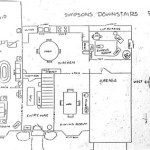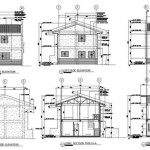Essential Considerations for Irrigation Pump House Plans
Designing an irrigation pump house is a crucial step in ensuring the efficient and reliable operation of any irrigation system. Proper planning and execution are essential to minimize downtime, reduce maintenance costs, and maximize energy efficiency. Here are some key aspects to consider when developing irrigation pump house plans:
1. Location and Site Selection
The location of the pump house should be carefully chosen based on several factors, including:
- Proximity to the water source (well, reservoir, etc.)
- Ease of access for maintenance and repairs li>Adequate space for equipment and operations
2. Equipment Selection
The type and size of pumps required will depend on the specific irrigation needs. Key factors to consider include:
- Flow rate and pressure requirements
- Energy efficiency
- Maintenance requirements
3. Electrical System Design
The electrical system must be designed to safely and efficiently power the pumps. This includes:
- Proper sizing of electrical conductors and transformers
- Overcurrent protection and grounding
- Control systems for pump operation
4. Ventilation and Temperature Control
Proper ventilation is essential to prevent overheating and ensure the longevity of electrical equipment. Temperature control may be necessary in extreme climates.
5. Structural Design
The pump house structure must be able to withstand the weight of the equipment and withstand environmental factors such as wind, snow, and seismic activity.
6. Safety Features
Safety is paramount in any pump house design. Essential safety features include:
- Emergency stop switches
- Fire detection and suppression systems
- Adequate lighting and signage
7. Access and Maintenance
Regular maintenance is essential for the proper functioning of any irrigation system. The pump house design should facilitate easy access for maintenance activities, including:
- Clear walkways and access points
- Adequate lighting for nighttime repairs
- Lifts or cranes for heavy equipment removal
8. Environmental Considerations
The pump house design should minimize environmental impact by:
- Proper handling and storage of fuels and lubricants
- Minimizing noise pollution
- Incorporating energy-saving measures
By carefully considering all these essential aspects, irrigation pump house plans can be developed to optimize the performance and longevity of any irrigation system, maximizing agricultural productivity and profitability.
Irrigation Structures Such As A Pump House Or B Drop Box At The Scientific Diagram

Chapter 16 Design Of Pumping Stations

Water Pump House Section Plan And Plumbing Structure Drawing Details Dwg File Cadbull

Insulated Pump House

Pump House Well Water
Detailed Design

Chapter 16 Design Of Pumping Stations

How Big Should A Pump House Be

Chapter 16 Design Of Pumping Stations

Beginning Of A New Well Pump House Water Cover








